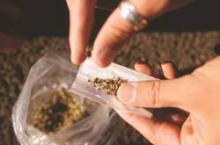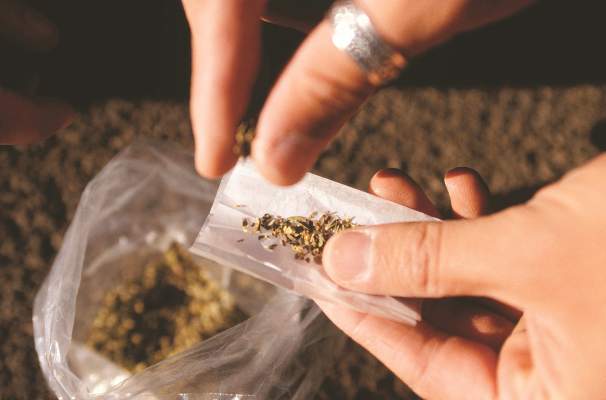User login
The past-year prevalence of marijuana use among U.S. adults more than doubled in 2012-2013, compared with 2001-2002. Meanwhile, the prevalence of marijuana use disorder among users decreased significantly during those periods, a study suggests.
“While many in the United States think prohibition of recreational marijuana should be ended, this study and others suggest caution and the need for public education about the potential harms in marijuana use, including the risk for addiction,” wrote Deborah S. Hasin, Ph.D., of the department of psychiatry, Columbia University, New York, and her colleagues.
Their conclusions are based on responses to survey questions obtained through face-to-face interviews of 36,309 adults in 2012-2013 that were compared to those of 43,093 adults in 2001-2002. In the more recently conducted survey, past-year DSM-IV marijuana use was defined as any use, and researchers used National Institute on Alcohol Abuse and Alcoholism Alcohol Use Disorder and Associated Disabilities Interview Schedule–5 (AUDADIS-5) to determine whether survey participants had marijuana use disorder. In the older study, the researchers used the AUDADIS-IV to evaluate whether a survey participant had a marijuana use disorder and was a marijuana user.
Past-year marijuana use significantly increased in 2012-2013, to 9.5%, compared with 4.1% in 2001-2002. Significant growth also occurred in the prevalence of DSM-IV marijuana use disorder; 2.9% of respondents to the 2012-2013 survey had the disorder, compared with 1.5% of respondents to the 2001-2002 survey.
However, the prevalence of past-year DSM-IV marijuana use disorder among marijuana users moved in the opposite direction. In 2012-2013, 30.6% of marijuana users manifested the disorder, compared with 35.6% of marijuana users in 2001-2002.
“Because no increase in the risk for marijuana use disorders was found among users (in fact, the risk decreased among users), the increase in prevalence of marijuana use disorders can be attributed to the increase in marijuana users between the two surveys,” Dr. Hasin wrote.
Future studies on marijuana use should address changes in past-year frequency of use, specific DSM-IV abuse or dependence criteria, severity of disorder, other aspects of use, and risk factors, the researchers said.
Read the study in JAMA Psychiatry (doi: 10.1001/jamapsychiatry.2015.1858).
The past-year prevalence of marijuana use among U.S. adults more than doubled in 2012-2013, compared with 2001-2002. Meanwhile, the prevalence of marijuana use disorder among users decreased significantly during those periods, a study suggests.
“While many in the United States think prohibition of recreational marijuana should be ended, this study and others suggest caution and the need for public education about the potential harms in marijuana use, including the risk for addiction,” wrote Deborah S. Hasin, Ph.D., of the department of psychiatry, Columbia University, New York, and her colleagues.
Their conclusions are based on responses to survey questions obtained through face-to-face interviews of 36,309 adults in 2012-2013 that were compared to those of 43,093 adults in 2001-2002. In the more recently conducted survey, past-year DSM-IV marijuana use was defined as any use, and researchers used National Institute on Alcohol Abuse and Alcoholism Alcohol Use Disorder and Associated Disabilities Interview Schedule–5 (AUDADIS-5) to determine whether survey participants had marijuana use disorder. In the older study, the researchers used the AUDADIS-IV to evaluate whether a survey participant had a marijuana use disorder and was a marijuana user.
Past-year marijuana use significantly increased in 2012-2013, to 9.5%, compared with 4.1% in 2001-2002. Significant growth also occurred in the prevalence of DSM-IV marijuana use disorder; 2.9% of respondents to the 2012-2013 survey had the disorder, compared with 1.5% of respondents to the 2001-2002 survey.
However, the prevalence of past-year DSM-IV marijuana use disorder among marijuana users moved in the opposite direction. In 2012-2013, 30.6% of marijuana users manifested the disorder, compared with 35.6% of marijuana users in 2001-2002.
“Because no increase in the risk for marijuana use disorders was found among users (in fact, the risk decreased among users), the increase in prevalence of marijuana use disorders can be attributed to the increase in marijuana users between the two surveys,” Dr. Hasin wrote.
Future studies on marijuana use should address changes in past-year frequency of use, specific DSM-IV abuse or dependence criteria, severity of disorder, other aspects of use, and risk factors, the researchers said.
Read the study in JAMA Psychiatry (doi: 10.1001/jamapsychiatry.2015.1858).
The past-year prevalence of marijuana use among U.S. adults more than doubled in 2012-2013, compared with 2001-2002. Meanwhile, the prevalence of marijuana use disorder among users decreased significantly during those periods, a study suggests.
“While many in the United States think prohibition of recreational marijuana should be ended, this study and others suggest caution and the need for public education about the potential harms in marijuana use, including the risk for addiction,” wrote Deborah S. Hasin, Ph.D., of the department of psychiatry, Columbia University, New York, and her colleagues.
Their conclusions are based on responses to survey questions obtained through face-to-face interviews of 36,309 adults in 2012-2013 that were compared to those of 43,093 adults in 2001-2002. In the more recently conducted survey, past-year DSM-IV marijuana use was defined as any use, and researchers used National Institute on Alcohol Abuse and Alcoholism Alcohol Use Disorder and Associated Disabilities Interview Schedule–5 (AUDADIS-5) to determine whether survey participants had marijuana use disorder. In the older study, the researchers used the AUDADIS-IV to evaluate whether a survey participant had a marijuana use disorder and was a marijuana user.
Past-year marijuana use significantly increased in 2012-2013, to 9.5%, compared with 4.1% in 2001-2002. Significant growth also occurred in the prevalence of DSM-IV marijuana use disorder; 2.9% of respondents to the 2012-2013 survey had the disorder, compared with 1.5% of respondents to the 2001-2002 survey.
However, the prevalence of past-year DSM-IV marijuana use disorder among marijuana users moved in the opposite direction. In 2012-2013, 30.6% of marijuana users manifested the disorder, compared with 35.6% of marijuana users in 2001-2002.
“Because no increase in the risk for marijuana use disorders was found among users (in fact, the risk decreased among users), the increase in prevalence of marijuana use disorders can be attributed to the increase in marijuana users between the two surveys,” Dr. Hasin wrote.
Future studies on marijuana use should address changes in past-year frequency of use, specific DSM-IV abuse or dependence criteria, severity of disorder, other aspects of use, and risk factors, the researchers said.
Read the study in JAMA Psychiatry (doi: 10.1001/jamapsychiatry.2015.1858).
FROM JAMA PSYCHIATRY

